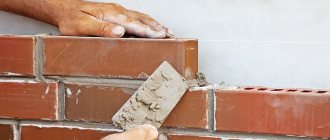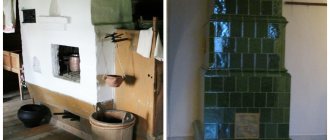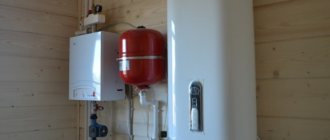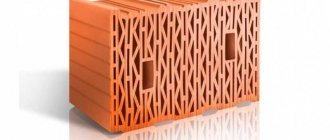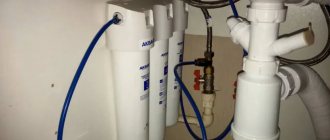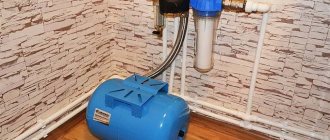How to properly use a pizza stone?
Using a stone in the oven
- Load the cold stone into the cold oven and begin preheating.
- Armed with a special pizza spatula, preferably one with a short handle, place the food on the baking stone. ...
- When the dish is ready, remove it from the stone using the same spatula. ...
- Leave the stone to cool in the oven.
Interesting materials:
How to properly insulate the walls of a wooden house from the inside? How to properly insulate a water supply? How to properly dispose of mercury lamps? How to properly humidify a room? How to properly humidify the air in a room? How to quit without working for two weeks? How to resign while on sick leave? How to properly resign as an intern? Which is correct according to what or what? How to turn on the battery correctly?
Why do many housewives put a brick in the oven or pour sand on a baking sheet before baking?
Many housewives know how difficult it is to prepare evenly baked pies, and generally not to spoil the baked goods. This becomes especially problematic in gas ovens, where the bottom of the product burns and the top remains damp. All this happens due to uneven heating distribution.
If in modern electric ovens it is possible to use the convection mode (when the air inside the oven constantly circulates) or, for example, vary the heat distribution modes, then in the case of gas ovens, the heat always goes from bottom to top, leaving a low temperature in the space around the edges or from above.
To ensure that the baking space is evenly heated and the temperature is stable and drops and rises gradually, without allowing the dough to fall due to sudden changes, experienced housewives use several life hacks.
The first option is to place 4-6 bricks of red baked clay on the bottom of the oven. They heat up well and release heat evenly, allowing you to achieve the desired baking conditions.
First, it is recommended to calcinate the bricks in an empty oven to get rid of excess odors and soot. The second option is to pour 2-3 kilograms of sand or table salt onto a tray or baking sheet.
The granules are also good at absorbing excess heat.
It is thanks to the uniform distribution of heat that pies from a Russian oven turn out so tasty.
The fact is that the classic Russian oven is designed in such a way that it retains heat and moisture very well, which means that the dough does not burn or dry out.
When cooling, the temperature drops very slowly, which allows you to first make a golden brown crust and then bake the pie well.
As a modern alternative to the Russian oven, some chefs use a baking stone. It is made from clay or marble.
It allows you to evenly distribute the heat in the oven and retain the heat for a long time.
For some dishes, a baking stone is simply necessary: for example, it is used to make a crispy crust on pizza without drying out the dough.
It will also be indispensable when baking bread, when the correct temperature and thermal conditions are the key to success. Bread cooked on such a stone turns out soft on the inside and with a delicious golden brown crust on the outside.
Since the baking stone cools slowly, you will need to be very careful when removing it from the oven.
It is also important to consider that if you use it instead of a baking sheet, you do not need to grease it, but only use baking paper.
What to do if the pies don't brown?
Grease the pies
egg yolk.
You can also mix the yolk in half with very strong tea leaves, milk or cream. to coat the pies
twice during baking.
The first time - before putting the baking sheet in the oven, and the second time - shortly before the pies
.
Interesting materials:
How to freeze a resume on HH? How to freeze whole bell peppers for stuffing? How to freeze sourdough bread? How to freeze green peppers for the winter? How to fall in love with your own husband again? How to solder an aluminum pan at home? How to burn data to a DVD disc? How to record Egor? How to burn a Windows 7 image to disk? How to record a Skype conversation from an iPhone?
Design and structure of the slab
All gas stoves are designed approximately the same. The following structural elements can be seen under the stove top:
- Burners. They are attached to the plate with strong bolts. In this case, each burner is divided into its component parts - a divider, an injector and covers. To access them, you need to disconnect the copper or steel pipe attached to the base of the burners. To do this you will need a 13 key.
- Candles. They are located around the perimeter of each burner. One is for ignition, and the other is used as a thermocouple. They are different from each other, so you can easily find the right candle. High-voltage candles are covered with a ceramic caftan.
- Collector. This is a thick tube from which wiring is supplied to each burner. When the flame of one of them goes out, the others will continue to work.
- Distribution reinforcement panel. Each ignition electrode is connected to single high-voltage wires.
- Capacitor, thyristor, diode and fuses. These parts are located inside the slab. They work when a charge needs to be formed due to a surge of energy from a candle.
Functionality
Spacious ovens have many built-in programs and functions that greatly simplify the cooking process. There are 12 of them in LG ovens:
- Convection heating
- Lighting
- Regular baking
- Regular baking + fan
- Double grill + fan
- Double grill
- Heating from below
- Infrared radiation
- Defrosting
- Pizza
- Fast warm-up Power Boost
- Proofing the dough
- Eco On function
LG engineers also made sure that built-in ovens are simple and easy to clean - for this purpose, the door has a removable glass that can be easily removed.
The line of new models of LG built-in ovens comes in 3 colors – white, silver and black – which allows them to fit seamlessly into any interior. They can be successfully combined with other new products from the company, for example, electric hobs and premium hoods.
New LG oven models have removable glass
So what to cook in a spacious oven? We are sharing three recipes for dishes that will fit in a full-sized oven and will delight the whole family!
Repair of any ovens at LenByt
engaged in professional repair of kitchen equipment from Desany, Hansa, Gorenje, Bosch, Zanussi, Ariston, Indesit, Kaiser, Gefest and other brands.
For the convenience of clients, we work seven days a week and without breaks from 7:00 to 23:00. The master will visit your home in any district of St. Petersburg on the day the application is submitted if the call is received before noon.
We use only new and original spare parts for repairs. This allows for high-quality repairs and increases the service life of equipment after intervention.
A guarantee is issued for all types of work, and a receipt for payment is issued.
The main reasons for poor oven performance
Regardless of the cost of the oven and the brand of the manufacturer, no owner is immune from unpleasant discoveries during operation. It often happens that old Soviet ovens, which have been standing for twenty years, bake and heat better and more efficiently than their brand new foreign counterparts.
There can be quite a lot of problems associated with gas appliances - sometimes the gas does not flow well, the oven goes out, the burner does not burn well, or a leak occurs. Therefore, it is extremely important to observe safety measures when operating gas-using equipment.
There are many reasons for this, from simple user inattention to serious system breakdowns. Here are some of them:
- poor care of the oven, burning of the thermocouple tip and the inside of the oven due to food debris that got there;
- poor quality of the factory assembly of the oven, in which the body becomes loose over time and displaces the working elements;
- disconnected electricity (if there are elements operating from it);
- poor quality of installation, legs are not aligned (over time, small distortions make themselves felt, affecting the operation of internal elements);
- poorly thought out gas supply system, use of a flexible hose of a length longer than necessary;
- insufficient pressure level under which the gas is supplied.
If your gas oven is equipped with a convection function, then it should cook food as expected. This means that the reason for the poor functionality of the equipment should be excluded and looked for in something else.
Of course, there are many more reasons for poor oven performance, but these are the main ones that craftsmen encounter.
Some of the breakdowns are quite difficult and dangerous to fix on your own. Therefore, it is advisable to contact a gas company specialist. Diagnosis of these faults is simple and consists of a thorough inspection of the equipment.
Advice from an experienced stove maker.
Often, just because the stove is smoking, people try to change it right away.
You look at the doomed stove, and there isn’t even a crack in it. You ask the owners: “Have you cleaned it?” But they don’t even know that the oven is being cleaned and where the cleaning spots are. Clean this stove and it will be like new! What will happen to it if it stands on a good foundation! True, sometimes it is difficult for a stove maker to find places to clean in someone else’s stove, because each stove maker made and makes his stove in his own way. Each stove maker has a different stove inside, and from the outside you won’t know where the flues are vertical or inclined, and where they are horizontal or mixed. And the cleaning locations depend on the type of gas ducts. Therefore, each stove maker, providing holes for removing soot, made them noticeable by closing them with small, well-fitted doors or laying these places with bricks on the edge with a small protrusion.
You rarely see identical stoves. After all, every stove maker tries to come up with something different when laying a stove, and the wishes of the owners have to be taken into account by changing the location of the firebox, cabinets, and pipes.
Never rush to move the oven. You can repair any part of it (furnace, wall), replace stove appliances, rearrange the roof, etc. You can even disassemble and rearrange the stove, and save the pipe standing on it, if it is good.
Furnaces have been created for centuries, their vagaries have been studied, and repair techniques have been developed. Or take, for example, a chimney. Previously, one chimney on the roof of a house could determine the prosperity of the owner, his position. The chimney was a kind of calling card of the owner of the house. The chimneys were laid out with special art, and their tops were crowned with a chimney made of milled iron.
Nowadays you rarely see a brick chimney over the roof of a hut, but there are more than enough asbestos cement pipes! And such pipes, overgrown with resin inside, catch fire and burst. The result is a fire. The skill of caring for stoves and the ability to repair stoves is gradually being lost. Often during rains, due to leaks in the roof, streams of dirty water flow into the room along the walls of the pipes, spoiling the whitewash of the stove and the nerves of the owners.
Sometimes rusty-yellow spots appear on the walls of the oven. And few people know that this happened because old bricks covered with a layer of soot were used during the masonry. In this case, no whitewashing will help. You will have to remove the contaminated bricks from the wall and replace them with clean ones. You can also use removed bricks, either by placing them in place with the soot inside, or by first clearing them of soot and calcining them well in a furnace or over a fire. It is better to use bricks coated with soot for laying internal partitions in the furnace.
Often the cracks around the stove plate are covered with a solution consisting of clay without sand. And in this case, the clay does not stick to the bricks, it cracks and, swelling, falls off. To prepare such a solution, I advise you to add sand to the clay. Usually, when preparing a solution, I take equal parts clay and sand and stir the mixture thoroughly so that there are no lumps in it. Then, crumpling a piece of the mixture in my palm, I throw it on the floor. If cracks appear in the resulting cake along the edges, then there is a lot of sand in the solution and you will have to add it to the clay mixture.
If necessary, it is easy to make a heating and cooking stove out of a heating stove. To do this, you should select a cavity above the firebox in one of the walls or in the middle of the oven and install a stove or oven there. At the same time, having figured out the flue channels, carefully lay out new ones. Do not forget, when inserting a brick into a cavity between other bricks, first moisten the contacting surfaces of the cavity and the brick with water and then coat them with clay mortar. In this case, the clay will not crawl out and the seam will remain complete.
To prevent bricks from burning in the firebox, it is lined or lined with refractory fireclay bricks on its edge. When heating a stove with anthracite, such a stove will not require repairs for more than 25 years. The best flue size is 135 X 180 (190) mm. In the furnace, the gas flues are arranged “one up” and “two (three) down”. It is good when, when marking, the number of gas ducts turns out to be even (in the absence of a separate pipe or riser gas duct). The best wall thickness is 120 mm.
The stove is heated, depending on the fuel, for one and a half to two hours in the morning and evening. The oven should not be overheated. The temperature of its walls should not exceed 70-80°C. The more the oven heats up, the more heat will go outside.
Often, to speed up the heating of the room, the furnace door is opened. This technique is untenable, since when the door is opened, the draft increases, and more heat escapes with the exhaust gases than enters the room from the open door. When burning, when the fuel burns and there is not much smoke, the valve is closed so that the draft is not very strong.
In many areas, the firebox is made without blowing, in this case using a firebox door with holes. Most often this is done due to the lack of cast iron grates. Of course, even without a blower, the firewood burns in such a firebox, but, drowning in the ash, they form a lot of firebrands, and while everything burns, a lot of heat will go “down the chimney” (in such stoves, to save heat, unburned firebrands are simply raked out of the firebox). In a stove with a grate, the ash spills through it into the ash pan, and the wood burns better.
If there is no cast-iron grate, I recommend making a grate out of brick, for which a wider recess is cut out on the plane of each brick at the bottom so that coals and nails do not get stuck in the cracks of the grate.
Is it possible to install an electric stove in a house with gas?
Instead of a gas stove, you can install an electric stove. To do this, you need to contact the gas utility and write a statement about refusal to use the gas stove. Representatives of the gas organization must respond to the application and turn off the gas stove, installing a plug after the tap and sealing it.
Interesting materials:
Why does window glass not transmit ultraviolet light? Why did Oleg conquer Kyiv? Why is deer a symbol of Christmas? Why does OLX block my account? Why did Onegin go on a journey? Why does Onegin reject Tatiana's letter? Why does rye bread fall off in a bread machine? Why is the money tree dangerous? Why is it dangerous to listen to loud music on headphones? Why is only one day from the life of Eugene Onegin in St. Petersburg described?
